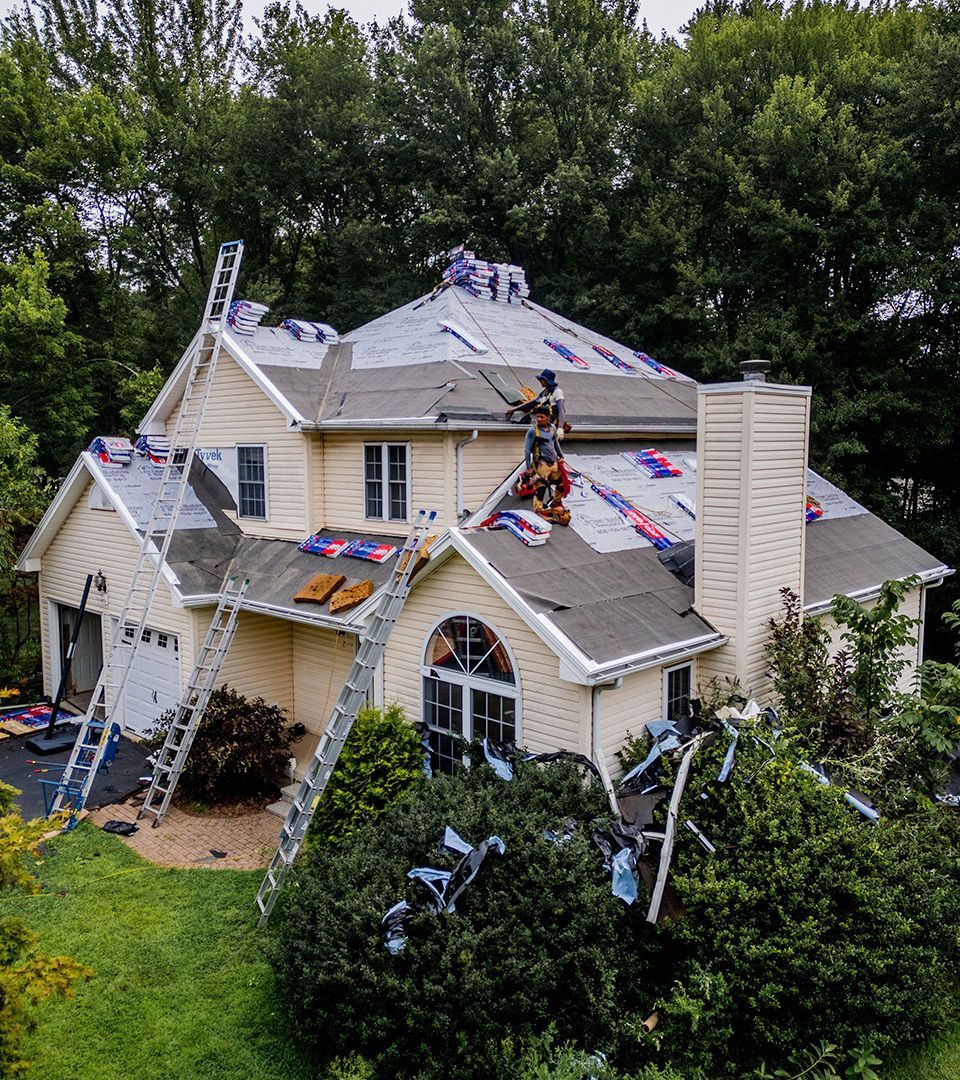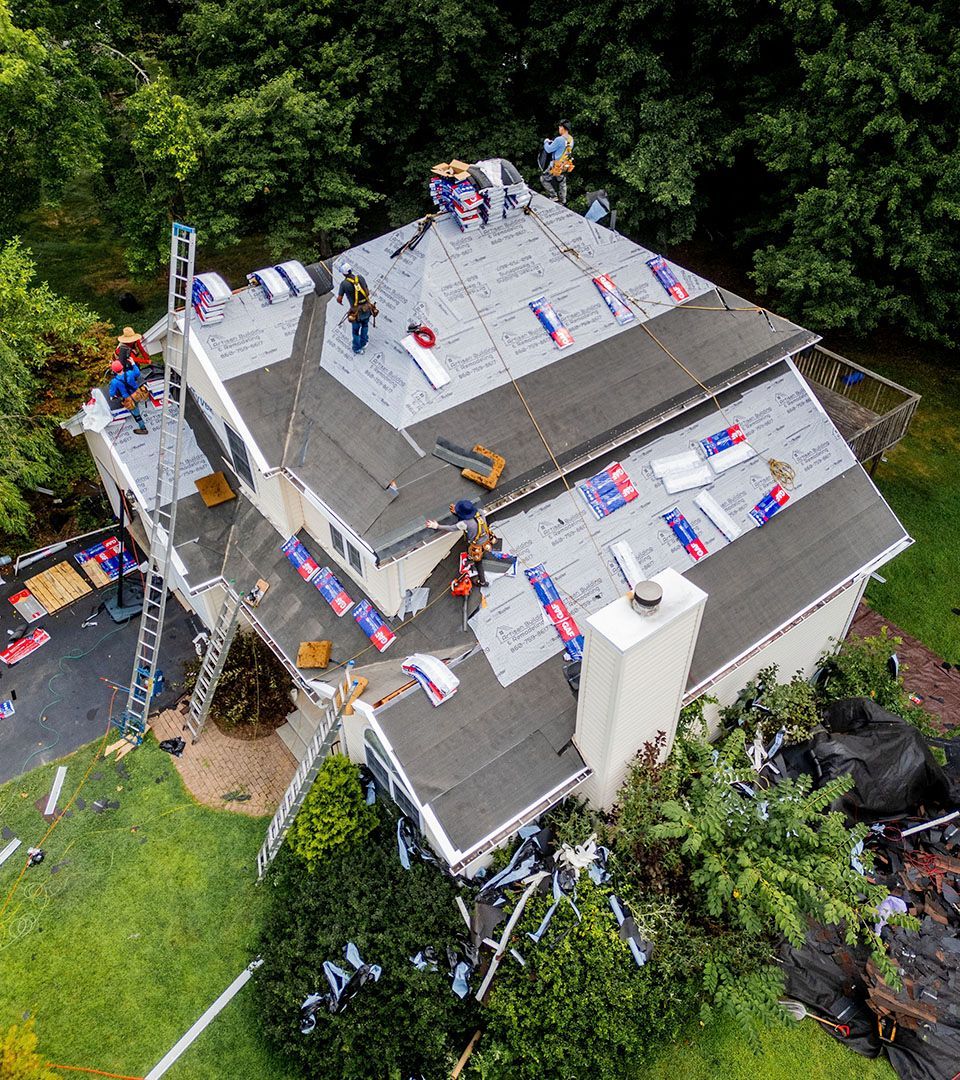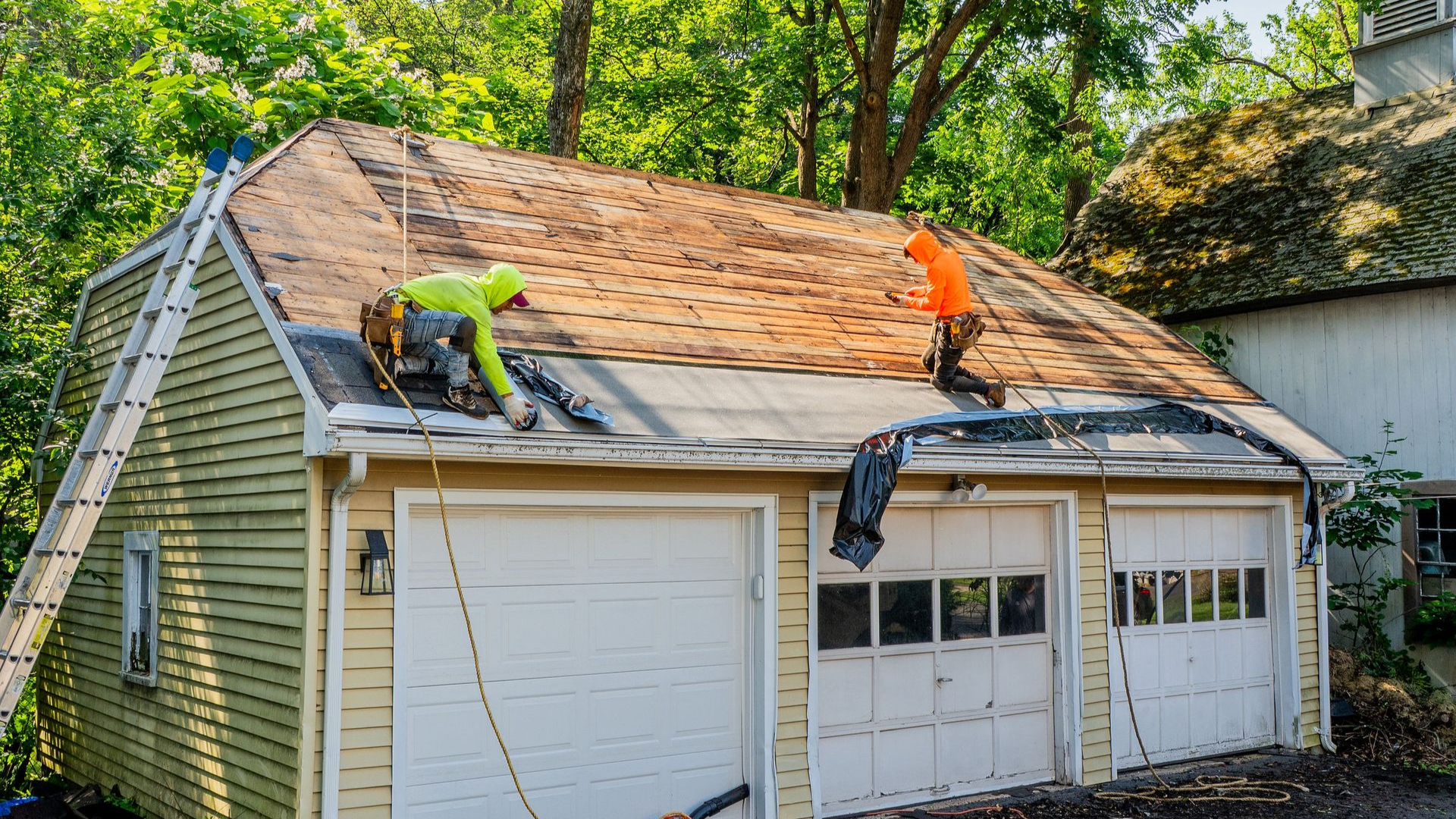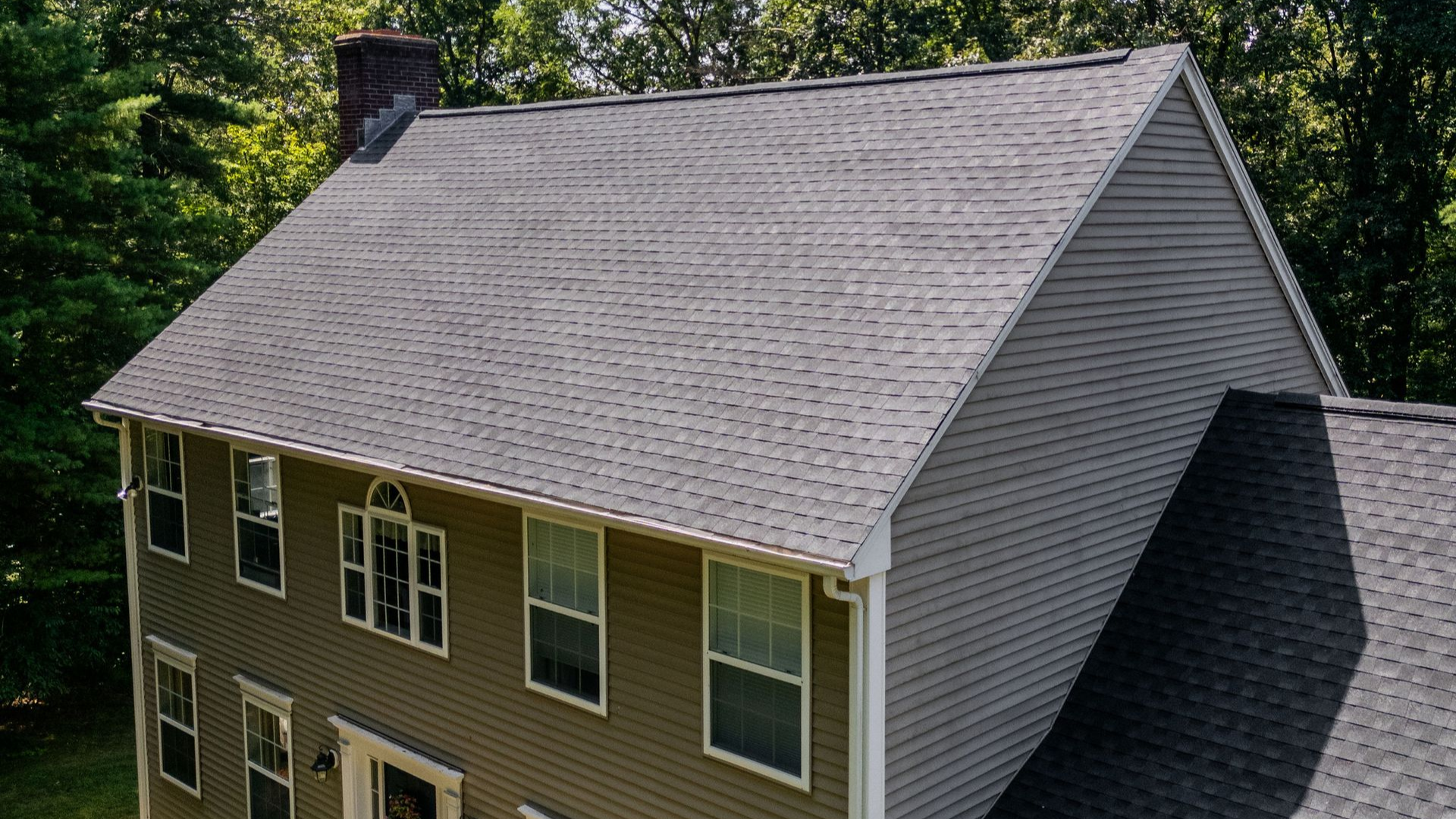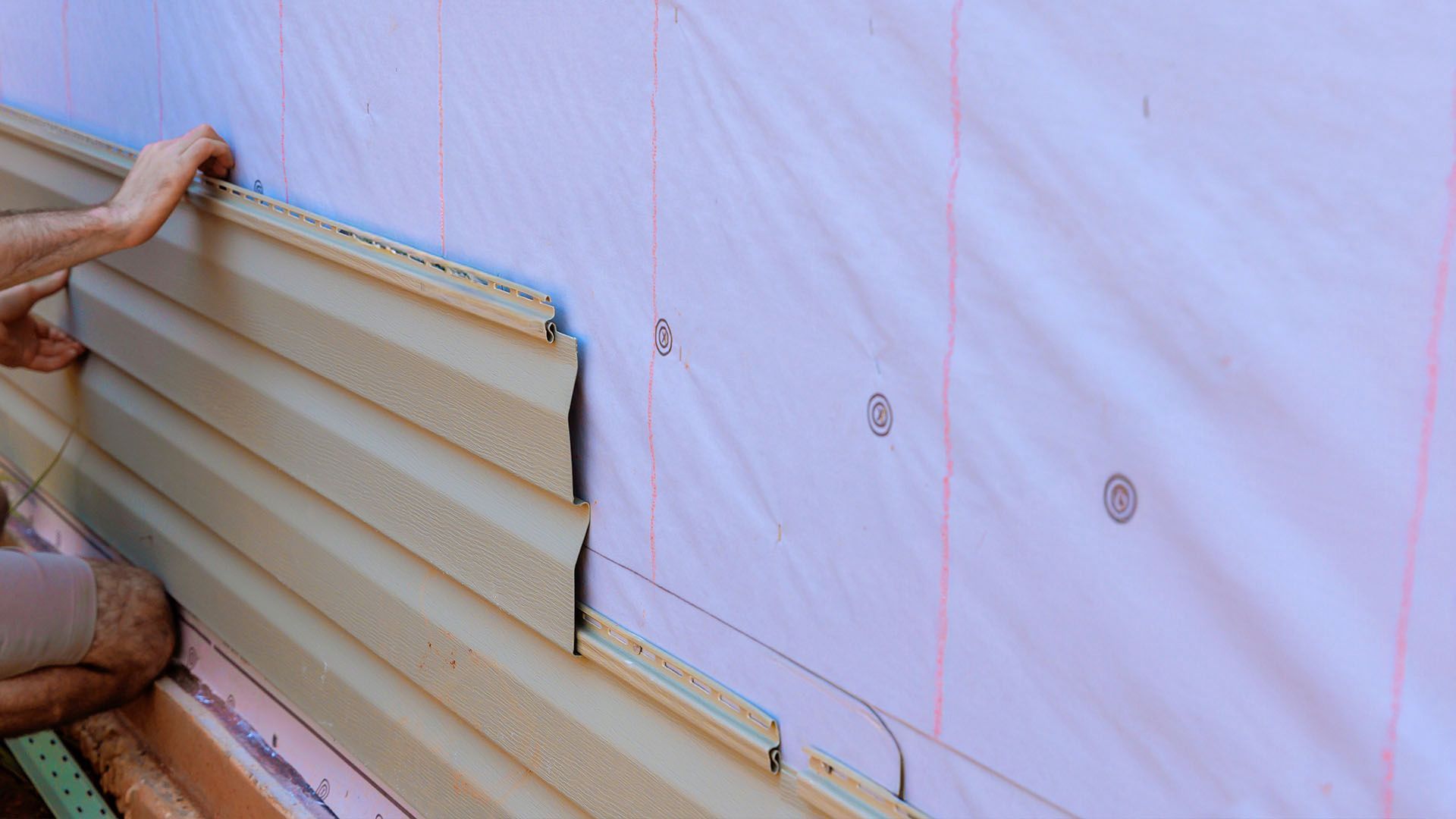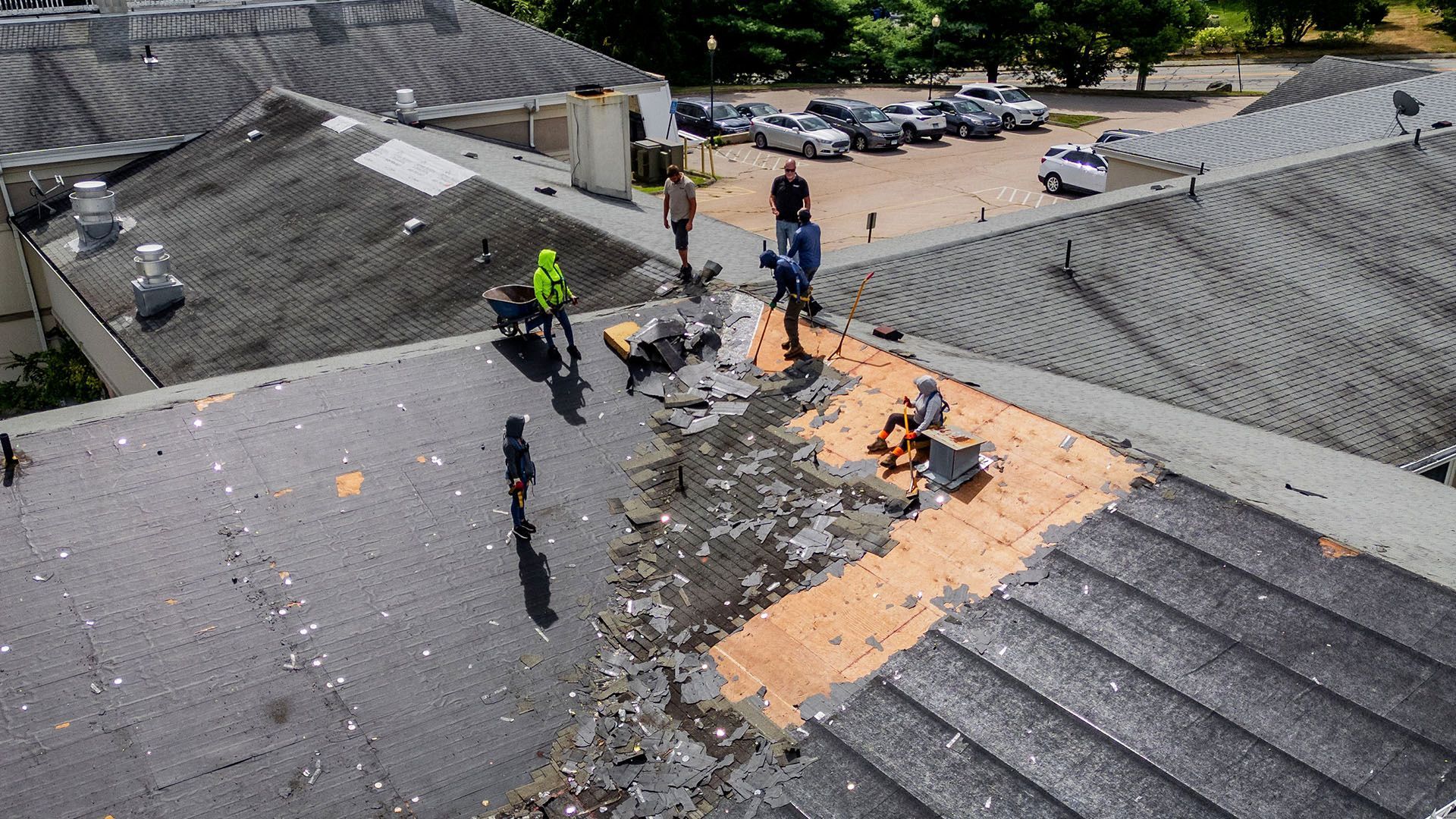How to Check Your Roof for Storm Damage: A Step-by-Step Guide
August 28, 2025
At Artisan Building & Remodeling, we’ve helped hundreds of homeowners across Connecticut protect and repair their homes after major storms. With years of experience and a trusted reputation, we know exactly what to look for when it comes to roof damage and we’re here to share that knowledge with you.
After a severe storm passes through, checking your roof for damage should be your top priority. Quick inspection can prevent minor issues from becoming costly repairs, protect your home from water damage, and ensure proper documentation for insurance claims. This guide walks you through safely identifying roof storm damage signs and knowing when to call professionals. If you've already identified significant damage, our emergency roof repair services are available 24/7.
Safety First
Never attempt roof inspection on wet, icy, or steep surfaces. Stay clear of downed power lines and report them immediately. Use binoculars or a drone for ground-level inspection, and always wear protective gloves and safety glasses when handling debris.
Stop and call emergency services if you notice:
- Active leaks near electrical systems
- Visible structural sagging
- Large tree limbs impacting your roof
Quick Ground-Level Scan
Start your inspection within 24-48 hours after the storm. Walk your property's perimeter, looking for obvious damage signs. Check for missing shingles, lifted or creased tabs, and displaced tiles visible from the ground. Shingles in your yard clearly indicate wind damage to roof shingles.
Don't overlook secondary indicators. Inspect your siding, fences, and vehicles for hail dents—if your car shows damage, your roof likely sustained similar impacts. Document everything with wide-angle photos from all four corners of your property.
Perimeter & Gutters
Your gutters reveal crucial information about roof health. Check for excessive granule buildup, which looks like coarse sand accumulating in gutters and downspouts. While some granule loss is normal, heavy accumulation indicates accelerated shingle wear from storm damage.
Inspect gutters for:
- Dents or bends from hail impact
- Sections pulling away from fascia
- Clogs from storm debris
- Damaged downspouts affecting drainage
Roof Surface & Components
From the ground, examine visible roof components using binoculars. For asphalt shingles, look for dark spots indicating hail damage to roof shingles, exposed fiberglass mat, or areas where granules have been stripped away. Wind damage appears as creased, lifted, or completely missing shingles.
Check these critical areas:
- Flashing: Look for bent, rusted, or separated metal around chimneys and walls
- Vents and pipes: Check for dents, cracks, or displacement
- Valleys: Inspect where roof sections meet for debris accumulation or visible damage
- Ridge caps: Look for torn or missing sections along roof peaks
Metal roofs require checking for loose panels, coating loss, and dents at seams. Tile roofs need inspection for cracks, chips, or displaced tiles—never walk on tile roofs as they break easily. Learn more about different roofing materials and their vulnerabilities in our guides on metal roofing and asphalt shingle roofing.
Inside the Home & Attic
Interior inspection often reveals hidden damage. Check ceilings for water stains appearing as yellow or brown rings. Look for bubbling paint, sagging drywall, or damp spots. These roof leak after storm indicators may not appear immediately, so continue monitoring for several days.
In your attic, use a flashlight to inspect for:
- Wet or darkened wood decking
- Active drips during rainfall
- Daylight visible through roof boards
- Compressed or damp insulation
- Musty odors indicating moisture
Need Professional Help? If you discover any of these warning signs, don't wait for damage to worsen. Schedule a professional roof inspection today or call us for immediate assistance.
Storm-Specific Checklists
Wind Damage
- Creased tabs bent but not torn
- Lifted edges breaking adhesive seals
- Missing shingles exposing underlayment
- Diagonal patterns showing wind direction
For more information about wind damage specifically, see our guide on wind damage repair.
Hail Damage
- Circular dents on soft metals (vents, gutters, flashing)
- "Bruised" shingles feeling soft when pressed
- Random impact patterns across roof surface
- Granule loss creating shiny spots
Heavy Rain
- Water backup at valleys
- Overflowing gutters
- Flashing leaks around penetrations
- Soffit and fascia damage from overflow
Fallen Debris
- Punctures through roofing material
- Cracked or broken tiles
- Structural damage to rafters
- Tree limb roof damage requiring immediate attention
Document Everything
Proper documentation ensures successful insurance claims. Take wide shots showing overall roof condition, then capture close-ups with a coin or ruler for scale. Record the date, time, and specific location of damage (example: "north slope, near chimney"). Keep damaged shingles as physical evidence.
Create detailed notes including storm date, wind speeds, hail size, and discovery date. Email photos to yourself for time-stamped records.
Temporary Mitigation
If you discover active leaks, place buckets under drips and move valuables to safety. For ceiling bulges from water accumulation, carefully puncture the center to allow controlled drainage.
Emergency roof tarping requires proper installation to avoid additional damage. Use heavy-duty tarps extending well beyond damaged areas, secured with boards rather than nails through undamaged sections. However, professional tarping is strongly recommended for safety and effectiveness.
Emergency Services Available:
Our team provides 24/7 emergency roof repair and professional tarping services across Connecticut. Don't risk injury or further damage—call (860) 759-8617 for immediate professional assistance.
When to Call a Professional
Call immediately for:
- Persistent leaks despite temporary measures
- Structural concerns or soft spots
- Large missing sections exposing underlayment
- Multiple areas of damage
- Complex roofing systems (tile, slate, metal)
Professional roof inspection provides detailed documentation crucial for insurance claims. Licensed roofers can identify subtle damage homeowners might miss and provide accurate repair estimates.
Get Your Free Storm Damage Assessment: Artisan Building and Remodeling offers comprehensive storm damage repair services throughout Connecticut. Our certified inspectors provide detailed reports with photos and measurements—exactly what insurance companies need. Contact us today for your free evaluation.
Insurance & Next Steps
Review your policy's storm coverage before filing claims. Most policies require notification within specific timeframes. Contact your insurer with documented evidence and schedule an adjuster visit promptly. For detailed guidance on navigating the claims process, see our comprehensive roof damage insurance claims guide.
Insurance process tips:
- Have a licensed roofer present during adjustment
- Get multiple estimates for comparison
- Don't sign Assignment of Benefits without legal review
- Avoid door-to-door "storm chasers" offering immediate repairs
- Verify contractor licensing and local reviews
Preventive Upgrades & Maintenance
Consider impact-resistant shingles for better storm protection and potential insurance discounts. Maintain your roof with biannual gutter cleaning, trimming overhanging branches, and annual professional inspections.
Schedule inspections every spring and fall, plus after any significant weather event. Address minor issues promptly to prevent escalation during future storms.
Tools & Homeowner Checklist
Essential inspection tools:
- Binoculars or drone for detailed viewing
- Flashlight for attic inspection
- Camera for documentation
- Measuring tape for damage sizing
- Protective gear for safety
Conclusion
Regular roof inspection after storms protects your investment and prevents costly damage. While this guide helps identify obvious problems, professional evaluation ensures thorough assessment and proper repairs. Don't let minor storm damage become major expenses—when you notice signs of roof storm damage or need peace of mind after severe weather, schedule a professional inspection immediately.
At Artisan Building and Remodeling, our experienced team provides free storm damage assessments with detailed photo documentation and insurance claim assistance. We'll help you navigate the entire process from inspection through repair completion.
Contact us today for your complimentary roof evaluation and protect your home before the next storm arrives.
Frequently Asked Question's
About Storm Damage
How to Inspect a Roof for Storm Damage
Inspecting your roof after a storm is crucial to catch damage early and file insurance claims in time. Here's how to do it safely and effectively:
1. Start from the Ground
Look for obvious signs like missing shingles, dented gutters, or debris around your home.
2. Check for Shingle Damage
Look for:
- Cracked, curled, or missing shingles
- Bruises or soft spots (indicative of hail impact)
- Granule loss (you may find granules in your gutters or near downspouts)
3. Inspect Flashing & Vents
Flashing around chimneys, vents, and skylights can easily get lifted or damaged. Make sure they are still sealed and secure.
4. Look in the Attic or Ceiling
Check for water stains, mold, or musty smells. These are signs of water intrusion from roof damage.
5. Hire a Professional
For safety and a more thorough inspection (especially after hail or windstorms), hire a licensed roofing contractor.
How Do I Tell If My Roof Has Storm Damage?
Storm damage may not always be visible from the ground. Here's what to look for:
- Visible shingle damage (missing, cracked, curled, or torn shingles)
- Hail impact marks on shingles, flashing, or gutters
- Leaky ceilings or water stains
- Debris on roof (branches or signs of punctures)
- Loose or dented flashing
- Unusual increase in energy bills (a sign of compromised insulation)
If in doubt, schedule a professional roof inspection to avoid costly delays or denied insurance claims.
How Much Does a Basic Roof Inspection Cost?
- Free: Many roofing companies offer free inspections, especially after a major storm or as part of a promotional service.
- Paid Inspections: Typically range from $100–$400, depending on your location, roof size, and complexity.
- Drone or Infrared Inspections: Can cost $200–$600 or more, but offer more detailed data.
Will Insurance Pay for a Roof Inspection?
- Generally, no. Most homeowners insurance policies do not cover the cost of routine or preventative roof inspections.
- However, if your roof suffered storm damage and you file a claim, the inspection performed by an insurance adjuster is covered as part of the claim process.
- Some roofing companies will also perform free inspections in anticipation of an insurance claim.
Will Insurance Cover Roof Damage From a Storm?
Yes—if the damage is caused by a covered peril, such as:
- Hail
- Wind
- Fallen trees
- Heavy rain or snow (causing leaks, structural damage)
Key considerations:
- You must file the claim promptly—most policies have a time limit.
- The insurer will assess whether the damage was sudden and accidental versus a result of neglect or age.
- Coverage may include repairs or full replacement, minus your deductible.

